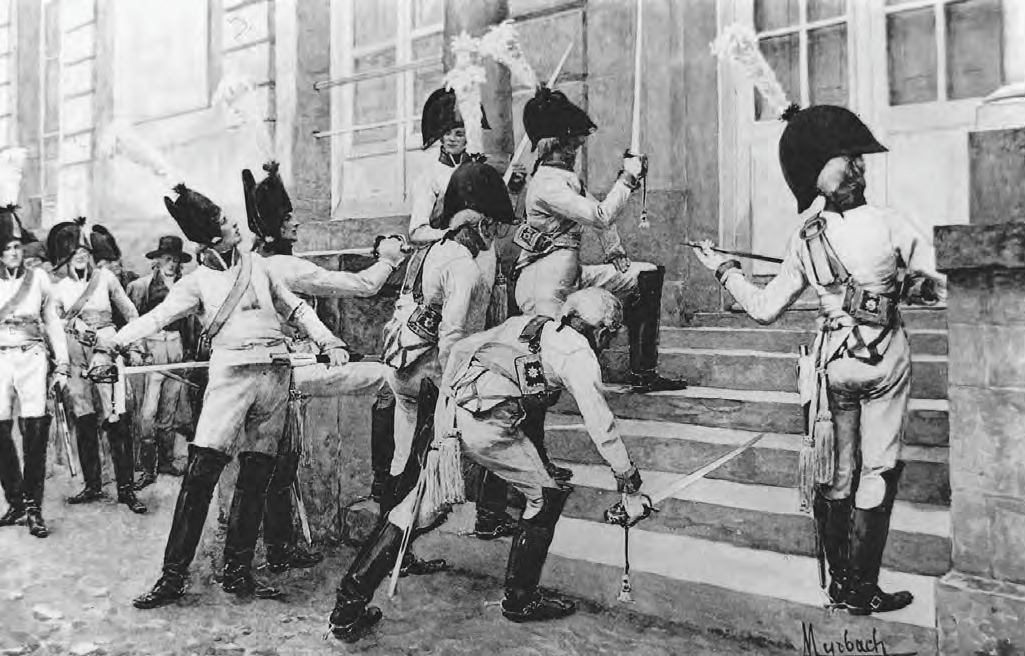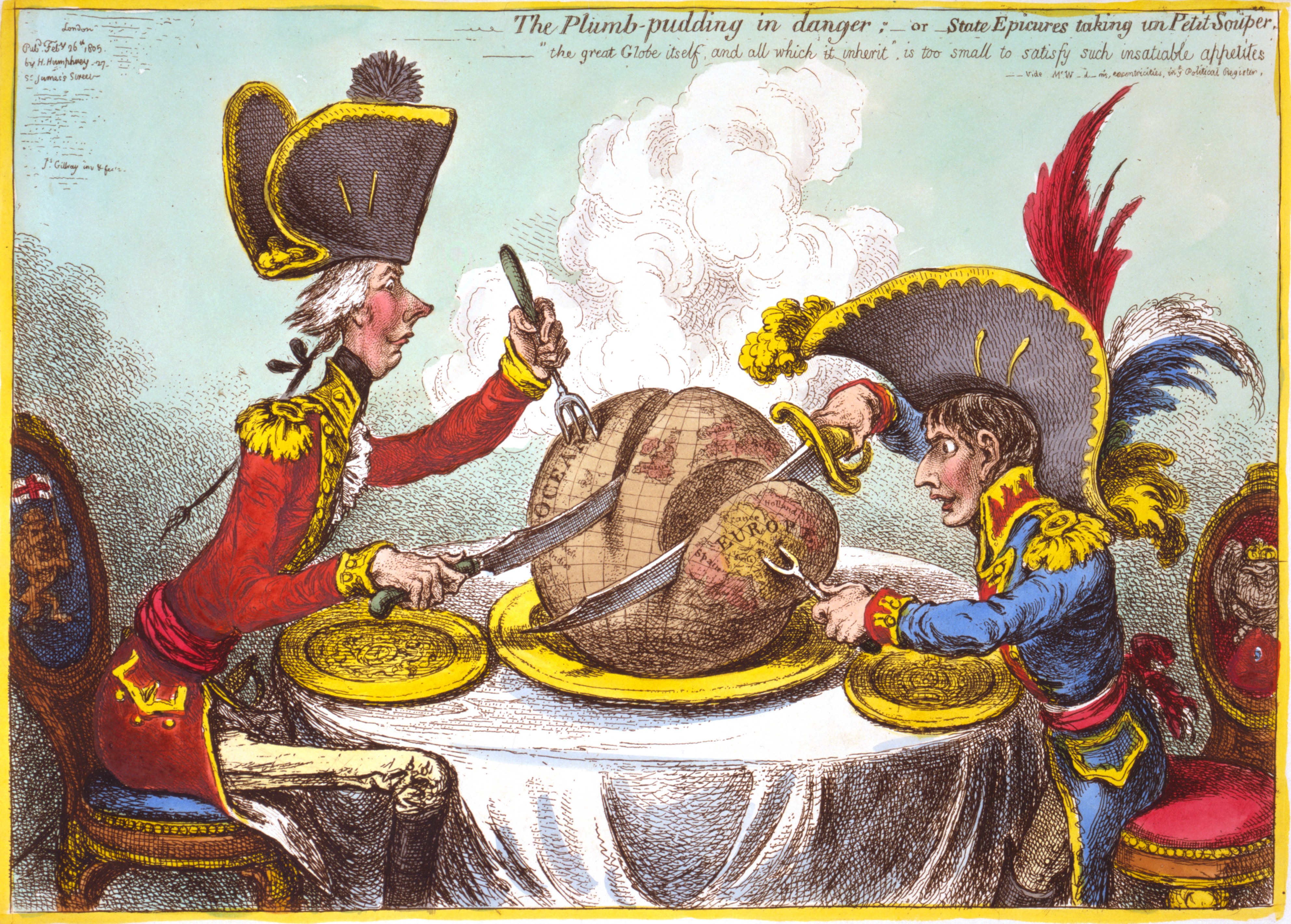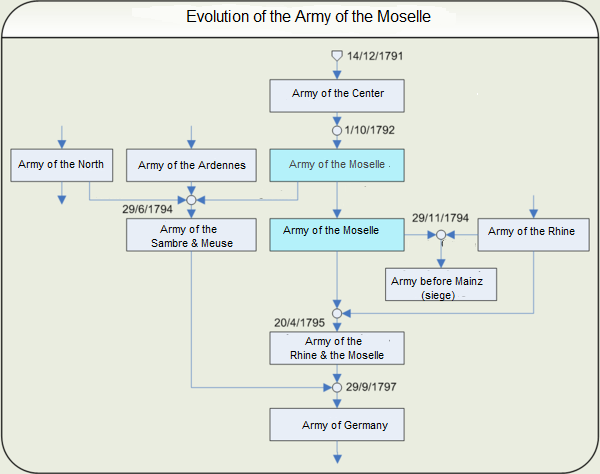|
4e Régiment De Dragons
The 4th Dragoon Regiment (french: 4e Régiment de dragons, 4e RD) was a cavalry unit created during the Ancien Regime and was dissolved on July 11, 2014. Creation and different names * 1667 : creation of the 4e Régiment de dragons under the designation of Beaupré-Cavalry * 1684 : Chartres-Cavalry * 1724 : Clermont-Prince-Cavalry * 1771 : Marche-Prince-Cavalry * 1776 : Conti-Dragons * 1791 : 4e Régiment de dragons * 1814 : 2e Régiment de dragons de la Reine * 1815 : 4e Régiment de dragons * 1815 : dissolution of the regiment * 1816 : creation under the designation of Régiment des dragons de la Gironde * 1825 : 4e Régiment de dragons * 1926 : dissolution of the regiment * 1929 : creation of the regiment under the designation of 4e bataillon de dragons portés from the 4e groupe de chasseurs cyclistes * 1935 : 4e Régiment de dragons portés * 1940 : dissolution of the regiment * 1947 : creation of the regiment under the designation of 4e bataillon de dragons portés * 1948 ... [...More Info...] [...Related Items...] OR: [Wikipedia] [Google] [Baidu] |
French Army
The French Army, officially known as the Land Army (french: Armée de Terre, ), is the land-based and largest component of the French Armed Forces. It is responsible to the Government of France, along with the other components of the Armed Forces. The current Chief of Staff of the French Army (CEMAT) is General , a direct subordinate of the Chief of the Defence Staff (CEMA). General Schill is also responsible to the Ministry of the Armed Forces for organization, preparation, use of forces, as well as planning and programming, equipment and Army future acquisitions. For active service, Army units are placed under the authority of the Chief of the Defence Staff (CEMA), who is responsible to the President of France for planning for, and use of forces. All French soldiers are considered professionals, following the suspension of French military conscription, voted in parliament in 1997 and made effective in 2001. , the French Army employed 118,600 personnel (including the Fo ... [...More Info...] [...Related Items...] OR: [Wikipedia] [Google] [Baidu] |
War Of The Spanish Succession
The War of the Spanish Succession was a European great power conflict that took place from 1701 to 1714. The death of childless Charles II of Spain in November 1700 led to a struggle for control of the Spanish Empire between his heirs, Philip of Anjou and Charles of Austria, and their respective supporters, among them Spain, Austria, France, the Dutch Republic, Savoy and Great Britain. Related conflicts include the 1700–1721 Great Northern War, Rákóczi's War of Independence in Hungary, the Camisards revolt in southern France, Queen Anne's War in North America and minor trade wars in India and South America. Although weakened by over a century of continuous conflict, Spain remained a global power whose territories included the Spanish Netherlands, large parts of Italy, the Philippines, and much of the Americas, which meant its acquisition by either France or Austria potentially threatened the European balance of power. Attempts by Louis XIV of France and William III o ... [...More Info...] [...Related Items...] OR: [Wikipedia] [Google] [Baidu] |
War Of The Fourth Coalition
The Fourth Coalition fought against Napoleon's French Empire and were defeated in a war spanning 1806–1807. The main coalition partners were Prussia and Russia with Saxony, Sweden, and Great Britain also contributing. Excluding Prussia, some members of the coalition had previously been fighting France as part of the Third Coalition, and there was no intervening period of general peace. On 9 October 1806, Prussia declared war on France and joined a renewed coalition, fearing the rise in French power after the defeat of Austria and establishment of the French-sponsored Confederation of the Rhine in addition to having learned of French plans to cede Prussian-desired Hannover to Britain in exchange for peace. Prussia and Russia mobilized for a fresh campaign with Prussia massing troops in Saxony. Napoleon decisively defeated the Prussians in an expeditious campaign that culminated at the Battle of Jena–Auerstedt on 14 October 1806. French forces under Napoleon occupied Prus ... [...More Info...] [...Related Items...] OR: [Wikipedia] [Google] [Baidu] |
Battle Of Austerlitz
The Battle of Austerlitz (2 December 1805/11 Frimaire An XIV FRC), also known as the Battle of the Three Emperors, was one of the most important and decisive engagements of the Napoleonic Wars. The battle occurred near the town of Austerlitz in the Austrian Empire (modern-day Slavkov u Brna in the Czech Republic). The decisive victory of Napoleon's Grande Armée at Austerlitz brought the War of the Third Coalition to a rapid end, with the Treaty of Pressburg signed by the Austrians later in the month. The battle is often cited as a tactical masterpiece, in the same league as other historic engagements like Cannae or Gaugamela.Farwell p. 64. "Austerlitz is generally regarded as one of Napoleon's tactical masterpieces and has been ranked as the equal of Arbela, Cannae, and Leuthen."Dupuy p. 102 After eliminating an Austrian army during the Ulm Campaign, French forces seized Vienna in November 1805. The Austrians avoided further conflict until the arrival of the Russians bolster ... [...More Info...] [...Related Items...] OR: [Wikipedia] [Google] [Baidu] |
Battle Of Ulm
The Battle of Ulm on 16–19 October 1805 was a series of skirmishes, at the end of the Ulm Campaign, which allowed Napoleon I to trap an entire Austrian army under the command of Karl Freiherr Mack von Leiberich with minimal losses and to force its surrender near Ulm in the Electorate of Bavaria. Background In 1805, the United Kingdom, the Austrian Empire, Sweden, and the Russian Empire formed the Third Coalition to overthrow the French Empire. When Bavaria sided with Napoleon, the Austrians, 72,000 strong under Mack, prematurely invaded while the Russians were still marching through Poland. The Austrians expected the main battles of the war to take place in northern Italy, not Germany, and intended only to protect the Alps from French forces. A popular but apocryphal legend has it that the Austrians used the Gregorian calendar, the Russians were still using the Julian calendar. This meant that their dates did not correspond, and the Austrians were brought into confli ... [...More Info...] [...Related Items...] OR: [Wikipedia] [Google] [Baidu] |
War Of The Third Coalition
The War of the Third Coalition) * In French historiography, it is known as the Austrian campaign of 1805 (french: Campagne d'Autriche de 1805) or the German campaign of 1805 (french: Campagne d'Allemagne de 1805) was a European conflict spanning the years 1805 to 1806. During the war, France and its client states under Napoleon I opposed an alliance, the Third Coalition, made up of the United Kingdom, the Holy Roman Empire, the Russian Empire, Naples, Sicily and Sweden. Prussia remained neutral during the war. Britain had already been at war with France following the breakdown of the Peace of Amiens and remained the only country still at war with France after the Treaty of Pressburg. From 1803 to 1805, Britain stood under constant threat of a French invasion. The Royal Navy, however, secured mastery of the seas and decisively destroyed a Franco-Spanish fleet at the Battle of Trafalgar in October 1805. The Third Coalition itself came to full fruition in 1804–05 as Napole ... [...More Info...] [...Related Items...] OR: [Wikipedia] [Google] [Baidu] |
Battle Of Aldenhoven (1794)
The Battle of Aldenhoven or Battle of the Roer (2 October 1794) saw a Republican French army commanded by Jean Baptiste Jourdan defeat a Habsburg army under François Sébastien Charles Joseph de Croix, Count of Clerfayt which was defending the line of the Roer River. A key crossing was won by the French right wing at Düren after heavy fighting. The Austrian retreat from the Roer conceded control of the west bank of the Rhine River to France. The battle occurred during the War of the First Coalition, part of a wider conflict called the Wars of the French Revolution. Aldenhoven is located in the state of North Rhine-Westphalia in Germany about 21 kilometres (13 mi) northeast of Aachen. Background The Flanders campaign of 1794 saw the French Army of the North and Army of the Ardennes under General Charles Pichegru, and later elements of the Army of the Moselle under General Jean-Baptiste Jourdan, attack both flanks of the Coalition army facing them. After the pivotal ... [...More Info...] [...Related Items...] OR: [Wikipedia] [Google] [Baidu] |
Armée De Rhin-et-Moselle
The Army of the Rhine and Moselle (french: Armée de Rhin-et-Moselle) was one of the field units of the French Revolutionary Army. It was formed on 20 April 1795 by the merger of elements of the Army of the Rhine (France), Army of the Rhine and the Army of the Moselle. The Army of the Rhine and Moselle participated in two principal campaigns in the War of the First Coalition. Military planners in Paris formed armies based on specific strategic tasks, and the task of this Army was to secure the French frontier at the Rhine and to penetrate the German states, potentially threatening Vienna. The unsuccessful Rhine Campaign of 1795, 1795 campaign concluded with the removal of General Jean-Charles Pichegru from command. In Rhine Campaign of 1796, 1796, under the command of General Jean Victor Marie Moreau, the Army was more successful. After crushing the ''Reichsarmee''s elements at Kehl, the Army advanced into southwestern Germany. Its success depended on the cooperation with France' ... [...More Info...] [...Related Items...] OR: [Wikipedia] [Google] [Baidu] |
Second Battle Of Wissembourg (1793)
The Second Battle of Wissembourg from 26 December 1793 to 29 December 1793 saw an army of the First French Republic under General Lazare Hoche fight a series of clashes against an army of Austrians, Prussians, Bavarians, and Hessians led by General Dagobert Sigmund von Wurmser. There were significant actions at Wœrth on 22 December and Geisberg on 26 and 27 December. In the end, the French forced their opponents to withdraw to the east bank of the Rhine River. The action occurred during the War of the First Coalition phase of the French Revolutionary Wars. Background During the First Battle of Wissembourg on 13 October 1793, the Lines of Weissenburg, defended by the French Army of the Rhine, were stormed by an Austrian-Allied army under Wurmser. A month later, Austrian engineer Franz von Lauer compelled Fort-Louis on the Rhine to surrender to the Allies. The French government responded to the crisis by sending reinforcements from the Army of the Moselle. On 17 November, the ... [...More Info...] [...Related Items...] OR: [Wikipedia] [Google] [Baidu] |
Army Of The Moselle
The Army of the Moselle (''Armée de la Moselle'') was a French Revolutionary Army from 1791 through 1795. It was first known as the ''Army of the Centre'' and it fought at Valmy. In October 1792 it was renamed and subsequently fought at Trier, First Arlon, Biesingen, Kaiserslautern, Froeschwiller and Second Wissembourg. In the spring of 1794 the left wing was detached and fought at Second Arlon, Lambusart and Fleurus before being absorbed by the ''Army of Sambre-et-Meuse''. In late 1794, the army captured Trier and initiated the Siege of Luxembourg. During the siege, the army was discontinued and its divisions were assigned to other armies. History Originally known as the ''Army of the Centre'', it was renamed by decree of the National Convention on 1 October 1792 and kept under that name in the decrees of 1 March and 30 April 1793. By the decree of 29 June 1794 its left wing joined with the ''Army of the Ardennes'' and the right wing of the ''Army of the North'' to form the ... [...More Info...] [...Related Items...] OR: [Wikipedia] [Google] [Baidu] |
Battle Of Jena
A battle is an occurrence of combat in warfare between opposing military units of any number or size. A war usually consists of multiple battles. In general, a battle is a military engagement that is well defined in duration, area, and force commitment. An engagement with only limited commitment between the forces and without decisive results is sometimes called a skirmish. The word "battle" can also be used infrequently to refer to an entire operational campaign, although this usage greatly diverges from its conventional or customary meaning. Generally, the word "battle" is used for such campaigns if referring to a protracted combat encounter in which either one or both of the combatants had the same methods, resources, and strategic objectives throughout the encounter. Some prominent examples of this would be the Battle of the Atlantic, Battle of Britain, and Battle of Stalingrad, all in World War II. Wars and military campaigns are guided by military strategy, wherea ... [...More Info...] [...Related Items...] OR: [Wikipedia] [Google] [Baidu] |
Seven Years' War
The Seven Years' War (1756–1763) was a global conflict that involved most of the European Great Powers, and was fought primarily in Europe, the Americas, and Asia-Pacific. Other concurrent conflicts include the French and Indian War (1754–1763), the Carnatic Wars and the Anglo-Spanish War (1762–1763). The opposing alliances were led by Great Britain and France respectively, both seeking to establish global pre-eminence at the expense of the other. Along with Spain, France fought Britain both in Europe and overseas with land-based armies and naval forces, while Britain's ally Prussia sought territorial expansion in Europe and consolidation of its power. Long-standing colonial rivalries pitting Britain against France and Spain in North America and the West Indies were fought on a grand scale with consequential results. Prussia sought greater influence in the German states, while Austria wanted to regain Silesia, captured by Prussia in the previous war, and to contain Pruss ... [...More Info...] [...Related Items...] OR: [Wikipedia] [Google] [Baidu] |









